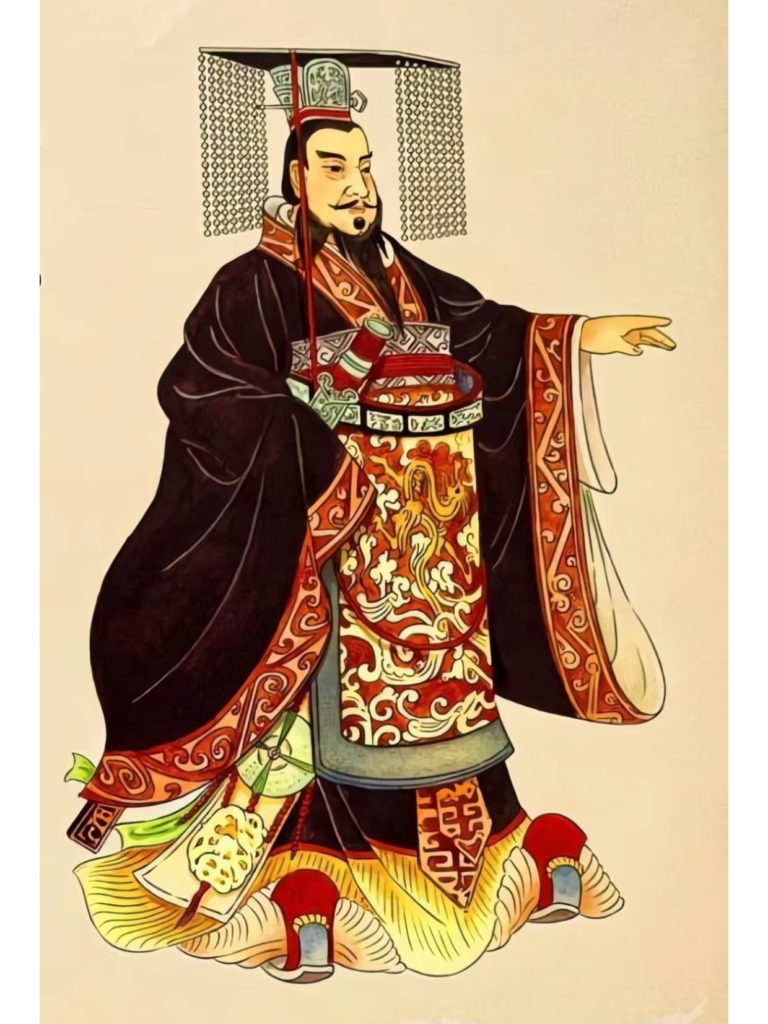The Qin dynasty (221–206 BCE), though short-lived, was one of the most transformative eras in Chinese history. As the first unified imperial dynasty, it laid the foundational structures that would shape China for over two millennia. Its achievements spanned politics, economy, engineering, military, and culture—each leaving an indelible mark on the nation’s development. Let’s explore them in detail.
1. How Did the Qin Reshape China’s Political System?
The Qin dynasty pioneered a centralized system of governance that broke away from centuries of feudal rule.
- Imperial Rule Established: Qin Shi Huang (Ying Zheng) declared himself the “First Emperor,” replacing the looser “king” system of the Zhou era. This shift concentrated authority under a single ruler and established hereditary rule.
- Bureaucratic Innovation: The central government adopted the Three Lords and Nine Ministers system. Key officials included the Chancellor (administration), Grand Commandant (military), and Censor-in-Chief (supervision), under whom nine specialized ministers managed finance, justice, and more—laying the foundation for an organized bureaucratic state.
- Administrative Uniformity: The Qin abolished the feudal “enfeoffment” system and implemented a commandery-county structure. More than 40 commanderies were governed by officials appointed by the central court, breaking the hereditary power of local nobility and strengthening imperial authority.
- Codified Law and Administrative Norms: Qin laws (秦律), rooted in Legalist philosophy, emphasized strict punishment and rule by law. Legal texts such as those discovered in the Shuihudi bamboo slips provide detailed regulations on governance, law enforcement, and civil affairs.
2. How Did the Qin Standardize the Economy and Improve Daily Life?
Qin economic reforms were instrumental in integrating a diverse empire.
- Currency Unification: The Qin replaced regional currencies with a standardized coin—the Banliang (半两), a round coin with a square hole. This promoted smoother trade and fiscal control across former warring states.
- Standardized Weights and Measures: By mandating uniform systems of length (chi), weight (jin), and volume (sheng), the Qin eliminated regional discrepancies, facilitating fair trade and taxation.
- Land and Agricultural Policy: Building on earlier reforms, the Qin continued policies promoting private land ownership and taxed based on land area. This incentivized productivity and allowed the state to better monitor and manage agricultural output.
3. What Were the Qin Dynasty’s Engineering and Infrastructure Achievements?
The Qin invested heavily in monumental infrastructure that elevated both civilian life and military logistics.
- Irrigation and Flood Control:
- Dujiangyan: Designed by Li Bing and his son, this project in Sichuan diverted the Min River, controlling floods and ensuring year-round irrigation. It remains in use today.
- Zhengguo Canal: Built by the engineer Zheng Guo, this canal redirected water from the Jing River to irrigate the Guanzhong Plain—expanding farmland and securing food supply for the empire.
- Transportation Canals:
- Lingqu Canal: Commissioned during southern campaigns, this canal connected the Yangtze and Pearl River systems, enabling troops and goods to move more efficiently between north and south.
- Road Systems and Vehicle Standards: The Qin built a national road network centered on Xianyang, their capital, and standardized axle width (“same track width for all carriages”) to ensure smooth and interoperable travel across regions.
4. How Did the Qin Unify Culture and Administration?
To strengthen cohesion across its vast empire, the Qin implemented sweeping cultural and social reforms.
- Written Language Reform: Under the direction of Prime Minister Li Si, the Qin promoted Small Seal Script (小篆) as the official script. This replaced the diverse and often incompatible writing systems of the former states, enabling clearer communication across regions.
- Suppression of Dissenting Thought: Legalist principles dominated the Qin worldview. Although controversial, policies such as the infamous book burnings and burial of scholars suppressed competing ideologies (especially Confucianism) and aimed to enforce intellectual uniformity.
- Household Registration System: The state required detailed census records, including household size, occupations, and demographics. This allowed precise tax collection, conscription, and labor mobilization, anchoring the government’s control over the populace.
5. How Did the Qin Expand and Protect Its Territory?
The Qin’s military innovations and territorial expansions shaped China’s geographic and strategic identity.
- Professional Military System: A large, standardized standing army was maintained. Men aged 17 to 60 were subject to military service, and weapons and armor were mass-produced with standardized specifications for consistency and efficiency.
- Territorial Expansion: The Qin pushed boundaries:
- Northward: Defeated the Xiongnu and reclaimed the Ordos region.
- Southward: Conquered the Baiyue tribes and established the three southern commanderies—Nanhai, Guilin, and Xiang—extending influence deep into modern-day Guangdong, Guangxi, and parts of Fujian.
- Military Infrastructure:
- Great Wall Consolidation: Qin Shi Huang linked various preexisting walls from the Warring States period into what became the first version of the Great Wall, defending the north from nomadic incursions.
- Straight Road (Zhidao): This highway connected the capital to the northern frontier (modern-day Inner Mongolia), streamlining military logistics over a stretch of more than 1,800 li (approximately 750 km).
Conclusion: Why Do Qin Achievements Still Matter?
Although the Qin dynasty lasted only 15 years, its influence endures in almost every facet of Chinese civilization. From a centralized government and unified legal codes to a national identity forged through standardized language, currency, and roads—the Qin turned philosophical blueprints into a functioning imperial system. Its legacy is not merely in its grandeur but in its systematization of unity: the vision that a fragmented land could become one empire, under one rule, with one voice. It was a turning point, the threshold where ancient China transformed from a mosaic of states into a single civilization with enduring structure and identity.
